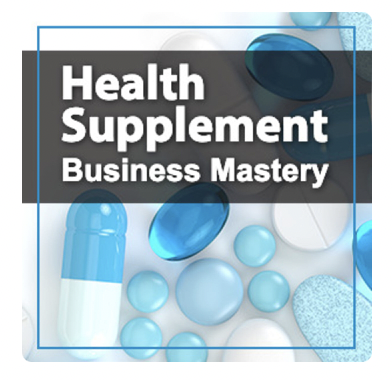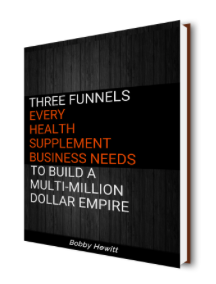 The dictionary defines context as:
The dictionary defines context as:
“The parts of a written or spoken statement that precede or follow a specific word or passage, usually influencing its meaning or effect.”
When it comes to selling natural health products online, context is vital to a sale because it defines how the product and solution is understood.
The tricky part is that anyone can easily misinterpret a statement because they took it out of context.
Which is why context is so important to weaving our tapestry of trust in our accelerated trust formula.
Accelerated Trust Online = (Logic + Belief) +
(Anxiety x Credibility) – The Other Party’s Self Interest
This level of trust is built quickly and is only just enough trust to move a visitor to the next step and ultimately towards purchase. Without this level of trust there is no sale.
Context is where the other party’s self interest comes into play. From the perspective of the buyer or visitor, the other party is the seller.
Self interest in expressed in the sales page or video sales letter.
The context is delivered through the sales copy, or as I like to think about it, the conversation the web page is engaged in within the visitors head.
This conversation must be crafted in such a way as to support the micro-trust model along the accelerated track of trust, in order to maximize sales.
The content framework is a methodology for applying trust in an online selling situation for any health product.
Here’s what the context framework that we use at Creative Thirst looks like:
- Engage
- Credibility
- Acknowledge and confirm
- Frame
- Invision
- Commit
Let’s deconstruct it, one by one.
The first step of engagement must always start with the problem
This is usually counter intuitive to many E-commerce style sites selling natural health products and supplements, they usually start with the product details.
There is an old adage in marketing WIIFM, what’s in it for me. Most marketers think this means that you need to tell the prospect the benefits of your product because what’s in it for them are the benefits, they get. But they couldn’t be further from the truth.
Remember individuals, not masses of people buy products
And there’s nothing more engaging to an individual than their specific problems. Starting with the problem is kind of like that car wreck on the other side of the road, people can’t help but look because it’s so engaging.
The problem also sets the context for your solution, it engages the visitor letting them know they are in the right place and reassures them that their problem will be addressed, implying that the solution is on this sales page.
Only after that engaged connection is met will they be willing to keep reading, which is another step toward micro-trust.
The next step in the context framework is credibility
Once the visitor is engaged then the next element to address is credibility. The conversation in their mind goes something like this. OK this page is relevant to me, that’s the problem that I have but why should I listen to you?
Remember at this point they have only taken the first micro-step they are still easing into trust here but if you follow this framework they will quickly cross the gap in no time.
So it is at this point where you need to give them the reasons why you or your natural health product is credible. Do you have any research studies you can site? Do you have a panel of doctors on your company board? Or maybe there is a specific way you decided what products to offer. Do your product offerings go through a rigorous testing and approval process? Anything that can support the credibility of the product, ingredients, you and or your company provides needs to be established at this second micro-trust point.
Now your visitor is inching slightly closer to the sale, that is if your credibility factors are believable and their problem was addressed right from the start.
But because of the credibility pattern-interupt we created, we need to circle back to the problem only this time we need to acknowledge the visitor and confirm that the problem is not their fault.
It is here where the web page and copy needs to express empathy in order to further cement the trust that was previously established. Again, just like starting with the problem. You’re acknowledging them and implying that there is a solution to their problem, which we’ll address next.
Which brings us to the next step…
Framing their problem to your solution
This is the section of your web page were you explain how your product does what it does and why it will work for them. It’s ok to support this section with scientific studies when needed, because you’re always supporting each step you ask the visitor to take with you.
And finally in-visioning their future state after they have solved their problem.
Paint the picture of what it will feel like once their problem is gone.
What will their life be like, the lives of their loved ones.
How will they feel and act once they have overcome their obstacle?
It is this future state that allows your prospect to fully in-vision life with your solution.
Finally it’s time to ask them to commit
That is it’s time to ask for the sale. Many health copywriters also like to support this with a restatement of the offer and the guarantee along with the offer itself, which is an art unto itself and a topic for later.
After they buy, you have the sale and the visitor has been converted to a buyer. But the journey of trust is not over. It actually has just started. The buyer shifts from accelerated trust to gradual trust at this stage.
Gradual Trust = (Reliability + Delight) x Consistency
This level of trust can only be build after accelerated trust has begun. Gradual trust is long-term and built slowly over time after purchase.
The customer has trusted you enough to buy, but that trust can still be broken or strengthened at this stage depending on their next set of experiences.
Just because you have the sale does not mean the trust chain is broken.
Did they receive the product in a timely manner?
Is it as expected? Better than expected? Worse?
How delighted are they?
What about how you communicate with them from this point onward?
Are you sending them more sales offers right away?
Are you following up on their experience with the product?
All of these and more contribute to the development of trust with you.
Each link in the trust chain from this point forward is built slowly over the actions and interactions you have with your new customer.
The trust that is build at this point is based on the question:
“Can I trust that you actually care about my health?”
The intimacy of trust built at this point comes from that perspective.
Do your values match with your actions?
Presumably your health solution implies that you might care about my health and not just selling me a product. So the first level of scrutiny is around the product, does it actually work? Can I feel a difference or do I truly believe it’s working for me? If that is the case then nothing will solidify trust more than reinforcing that your values of helping, previously expressed as words then supported by actions.
Remember we’re still in the process of building trust and it’s a delicate thing.
Is your product delighting your customer to a level that is above and beyond what is expected? The initial level of happiness with your product matters much more when building gradual trust.
If the customer is not happy with the initial product it does not matter how much more you give them, that initial trust has been started on a sour note.
Has the experience and communication with buying from you, both during and after, been the same?
This includes up-selling as well as shipment and receiving of the actual product. This sets the stage for the coming relationship. Is the messaging and expectation at each of these steps consistent with what your initial engagement has been?
To keep recurring supplement users for life you have to be reliable, delight them and be consistent over time. That is assuming that your product actually works. Your product is the core strength of the whole system, without a good product you don’t have a good business or enough of an impact on the world to make a difference.
Discover the 3 funnels that can help your health supplement business succeed.

Listen to the Health Supplement Business Mastery Podcast for for dietary supplement entrepreneurs and marketers.



